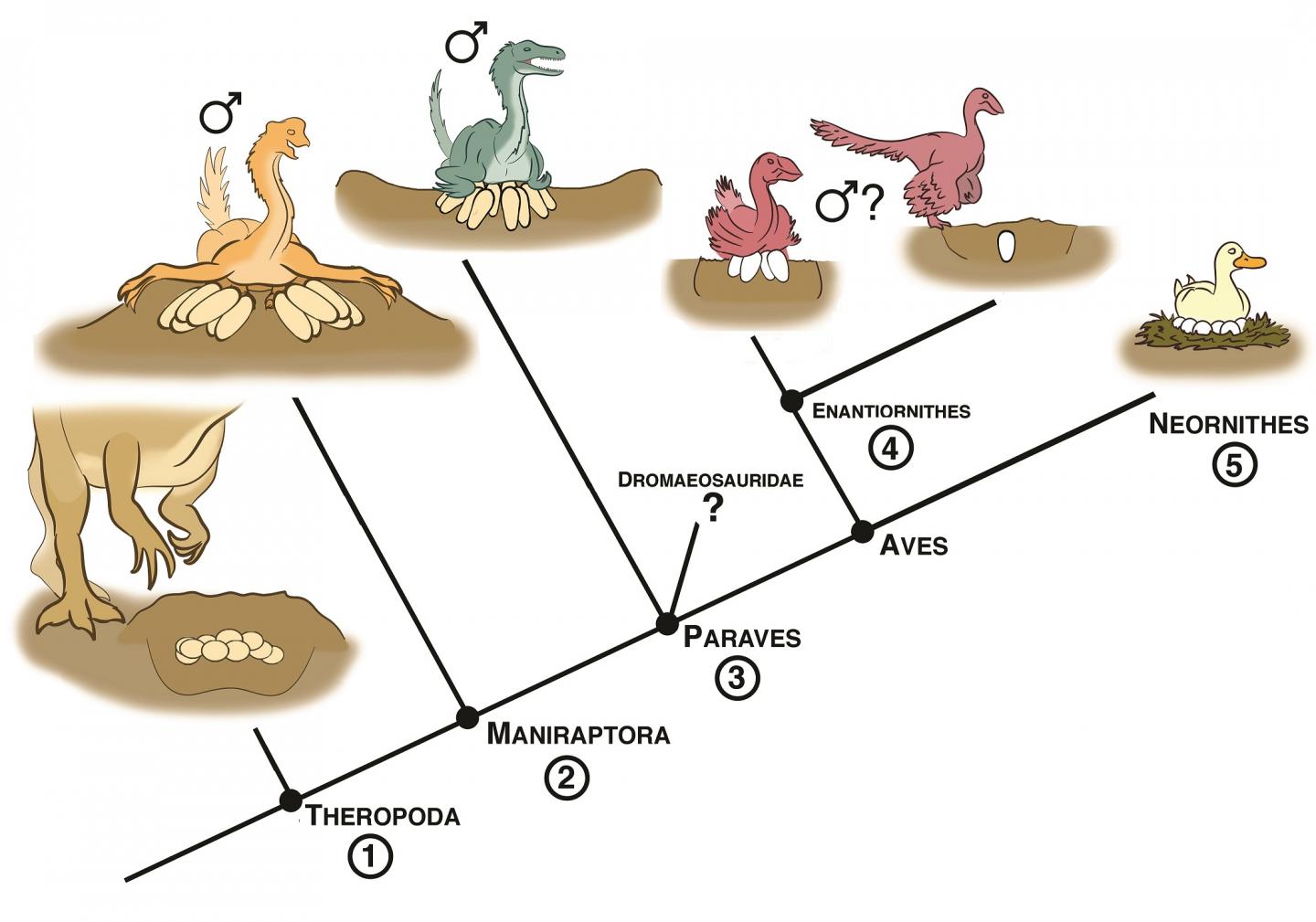
Birds' reproductive strategies have gone through a series of stages, from dinosaurs to today. What really did come first--the chicken or the egg? Birds' reproductive biology is dramatically different from that of any other living vertebrates, and ornithologists and paleontologists have long wondered how and when the unique features of bird reproduction originated. A new Review in The Auk: Ornithological Advances examines answers from three sources--modern birds, fossils of primitive birds, and fossils of the dinosaurs from which birds are descended--to shed new light on the subject.
All modern birds share certain reproductive features, such as a single functional ovary and the practice of incubating their eggs through direct contact. Analysis of the bird family tree also suggests that early birds built simple, open nests on the ground and that their young were "precocial," meaning they were well-developed and almost ready to fend for themselves when they hatched. Those dinosaurs close to the ancestry of birds shared some of these traits, but they had two functional reproductive tracts, and their eggs were smaller relative to their body size and more elongated than those of modern birds.
Fossils of primitive birds and eggs from the Mesozoic era place them midway between their dinosaur ancestors and their modern descendants, with eggs between those of pre-avian dinosaurs and modern birds in term of size and shape. In this way, David Varricchio and Frankie Jackson of the Montana State University are able to trace the evolution of bird reproduction through a series of distinct stages, from pre-avian dinosaurs to the birds of today.
"Reproduction in modern birds is distinct among living vertebrates. Many aspects of this reproduction mode trace their origin to theropod dinosaurs such as Oviraptors and Troodontids, but not really beyond them to more distantly related dinosaurs," according to Varricchio. "Interestingly, reproduction in the most common group of Mesozoic birds is very similar to that of these dinosaurs, and so still differs from modern birds. Consequently, modern birds stand apart from Mesozoic birds, and perhaps this contributed to their surviving the end-Cretaceous extinction event."
Source: Central Ornithology Publication Office
 Print Article
Print Article Mail to a Friend
Mail to a Friend
